Input interpretation

100 g of oxygen (chemical element)
Basic properties for 100 g
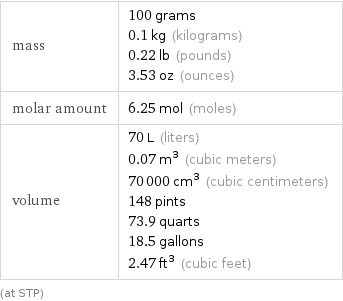
mass | 100 grams 0.1 kg (kilograms) 0.22 lb (pounds) 3.53 oz (ounces) molar amount | 6.25 mol (moles) volume | 70 L (liters) 0.07 m^3 (cubic meters) 70000 cm^3 (cubic centimeters) 148 pints 73.9 quarts 18.5 gallons 2.47 ft^3 (cubic feet) (at STP)
Corresponding quantities

sphere radius | 0.2556 meters side of a cube | 0.4121 meters
Thermodynamic properties for 100 g
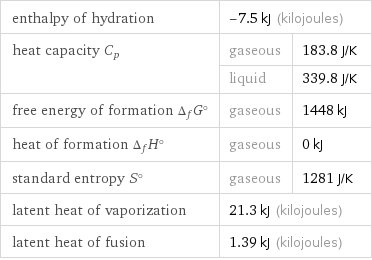
enthalpy of hydration | -7.5 kJ (kilojoules) | heat capacity C_p | gaseous | 183.8 J/K | liquid | 339.8 J/K free energy of formation Δ_fG° | gaseous | 1448 kJ heat of formation Δ_fH° | gaseous | 0 kJ standard entropy S° | gaseous | 1281 J/K latent heat of vaporization | 21.3 kJ (kilojoules) | latent heat of fusion | 1.39 kJ (kilojoules) |
Units

Phase change energies for 100 g from 25 °C

energy released from cooling to condensation point | 38.2 kJ (kilojoules) energy released from converting to liquid | 82.7 kJ (kilojoules) energy released from cooling to condensation point and converting to liquid | 59.5 kJ (kilojoules)
Lewis structure
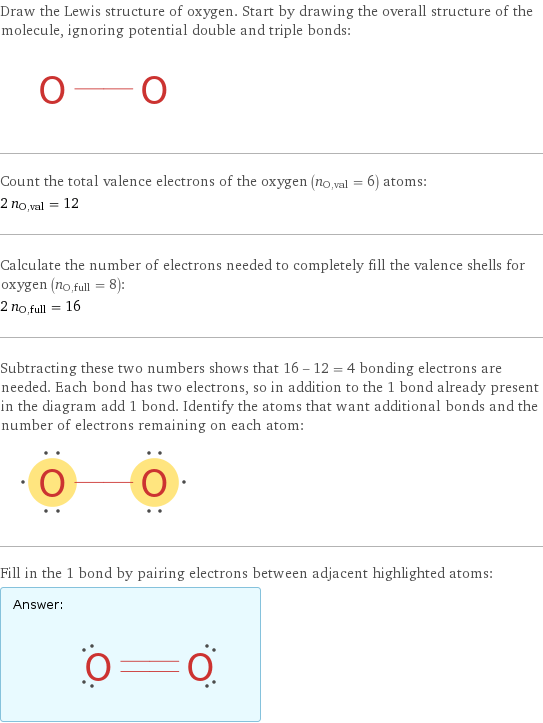
Draw the Lewis structure of oxygen. Start by drawing the overall structure of the molecule, ignoring potential double and triple bonds: Count the total valence electrons of the oxygen (n_O, val = 6) atoms: 2 n_O, val = 12 Calculate the number of electrons needed to completely fill the valence shells for oxygen (n_O, full = 8): 2 n_O, full = 16 Subtracting these two numbers shows that 16 - 12 = 4 bonding electrons are needed. Each bond has two electrons, so in addition to the 1 bond already present in the diagram add 1 bond. Identify the atoms that want additional bonds and the number of electrons remaining on each atom: Fill in the 1 bond by pairing electrons between adjacent highlighted atoms: Answer: | |
Chemical names and formulas
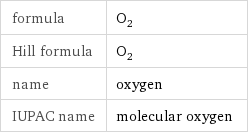
formula | O_2 Hill formula | O_2 name | oxygen IUPAC name | molecular oxygen
Substance properties
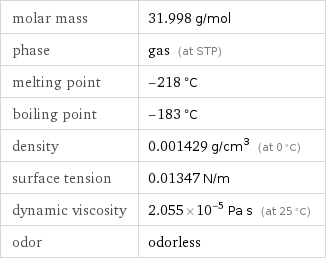
molar mass | 31.998 g/mol phase | gas (at STP) melting point | -218 °C boiling point | -183 °C density | 0.001429 g/cm^3 (at 0 °C) surface tension | 0.01347 N/m dynamic viscosity | 2.055×10^-5 Pa s (at 25 °C) odor | odorless
Units
